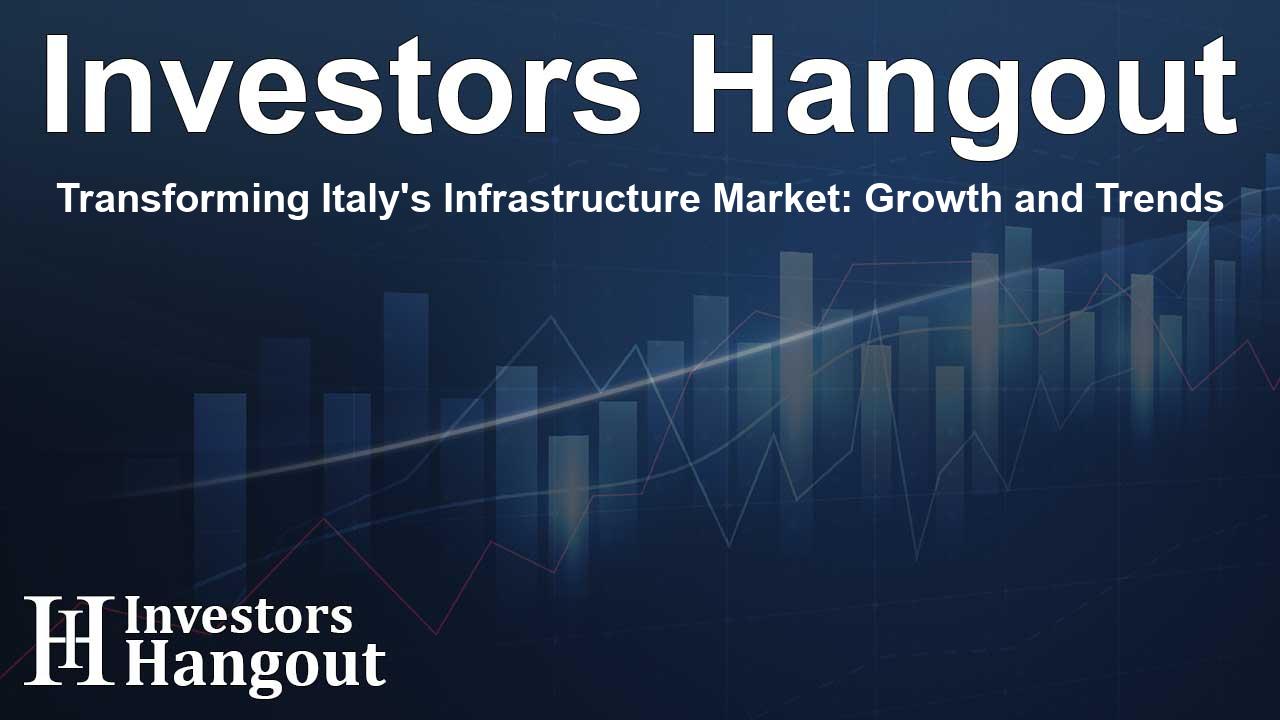Transforming Italy's Infrastructure Market: Growth and Trends

Overview of the Infrastructure Market Growth in Italy
The infrastructure market in Italy is poised for substantial growth, with an estimated increase of USD 24 billion anticipated between 2025 and 2029. This growth is fueled by a burgeoning urbanization trend and the accelerating impact of advanced technologies, particularly artificial intelligence (AI). According to recent analyses, the market is expected to expand at a compound annual growth rate (CAGR) of 4.2% over this forecast period. Urbanization plays a crucial role in this growth, particularly with the rise of the e-commerce industry demanding more robust infrastructure solutions.
Key Market Drivers and Trends
Urbanization and Technological Transformation
Urbanization is a driving factor as cities expand and evolve, necessitating improved infrastructure to sustain this growth. The increasing demand for efficient public services, particularly in transportation and utilities, is notable. The integration of AI into various aspects of the market is also redefining construction processes, improving efficiency, and enabling smarter project management. Moreover, the need for sustainability is prompting substantial investments in environmentally friendly infrastructure projects, including renewable energy sources such as wind and solar power.
Challenges in the Infrastructure Landscape
Despite the optimistic growth projections, several challenges exist within the Italian infrastructure sector. A pressing shortage of skilled labor poses significant hurdles, impacted by recent global disruptions. Construction companies face difficulties in maintaining production timelines due to these labor shortages, which can lead to project delays and increased costs. Furthermore, adherence to evolving environmental regulations presents additional complexities for project execution.
Investment Landscape and Strategic Insights
Investment Opportunities in Key Sectors
The anticipated investment trends highlight specific sectors benefiting from this market growth. Key sectors include electricity transmission, public transportation, and healthcare infrastructure. As the demand for reliable transport systems grows, significant improvements and expansions in transportation networks are expected. The construction of new hospitals and clinics in response to recent healthcare demands also represents a critical investment opportunity.
Innovative Technologies Shaping the Future
Innovations in AI and automation are emerging as pivotal elements in redefining infrastructure operations. Technologies like intelligent drones and fiber-optic networks are enhancing connectivity and operational efficiency, while automation tools aid in reducing operational complexities. The convergence of these technologies plays a vital role in meeting the growing logistical needs driven by urbanization, ultimately ensuring a resilient infrastructure framework.
Conclusion: A Future of Growth and Resilience
In summary, the infrastructure market in Italy stands at a transformative juncture. With substantial opportunities for growth stemming from urbanization and technological advancements, stakeholders are encouraged to strategically invest in sectors that promise sustainable returns. Addressing challenges, such as the skilled labor shortage and regulatory compliance, will be essential for maximizing the potential of Italy's infrastructure development. As the nation moves toward modernization, the focus must remain on creating a resilient, inclusive framework that supports its evolving urban landscape.
Frequently Asked Questions
What is driving the growth of the infrastructure market in Italy?
Growth is primarily driven by urbanization and the need for improved infrastructure due to the rising e-commerce industry, along with technological advancements like AI.
What are the key challenges faced by the Italian infrastructure market?
Key challenges include a shortage of skilled labor, which is impacting production timelines, as well as the need to comply with evolving environmental regulations.
How does AI influence the infrastructure market?
AI enhances operational efficiency, allows for better project management, and supports the development of smarter and more sustainable infrastructure solutions.
Which sectors are expected to see significant investment?
Expected sectors for significant investment include electricity transmission, public transportation, and healthcare infrastructure, especially in response to recent demands.
What is the forecasted growth rate of the Italian infrastructure market?
The Italian infrastructure market is projected to grow at a CAGR of 4.2% from 2025 to 2029, fueled by ongoing urban development and technological integration.
About The Author
Contact Riley Hayes privately here. Or send an email with ATTN: Riley Hayes as the subject to contact@investorshangout.com.
About Investors Hangout
Investors Hangout is a leading online stock forum for financial discussion and learning, offering a wide range of free tools and resources. It draws in traders of all levels, who exchange market knowledge, investigate trading tactics, and keep an eye on industry developments in real time. Featuring financial articles, stock message boards, quotes, charts, company profiles, and live news updates. Through cooperative learning and a wealth of informational resources, it helps users from novices creating their first portfolios to experts honing their techniques. Join Investors Hangout today: https://investorshangout.com/
The content of this article is based on factual, publicly available information and does not represent legal, financial, or investment advice. Investors Hangout does not offer financial advice, and the author is not a licensed financial advisor. Consult a qualified advisor before making any financial or investment decisions based on this article. This article should not be considered advice to purchase, sell, or hold any securities or other investments. If any of the material provided here is inaccurate, please contact us for corrections.
